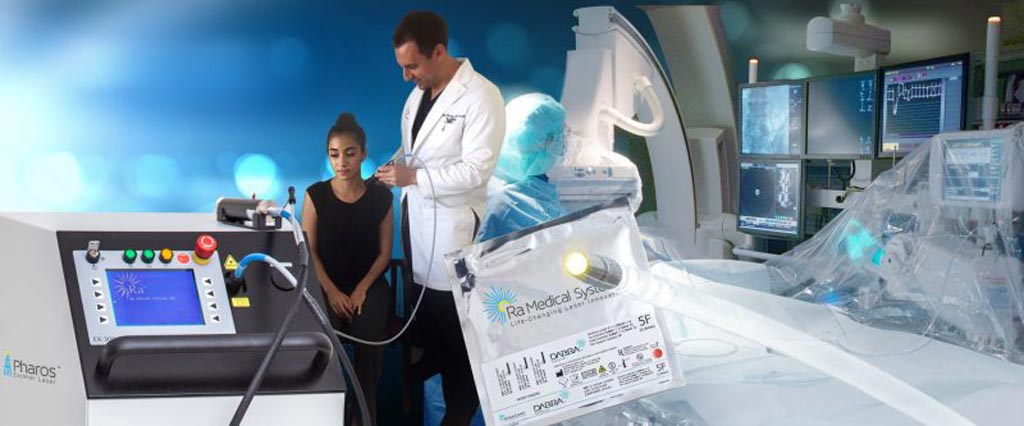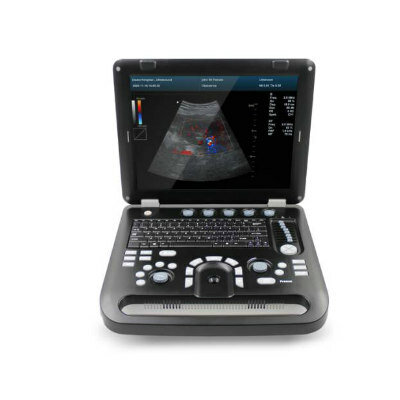Laser Ablation System Treats Complex PAD Blockages
By HospiMedica International staff writers
Posted on 13 Jun 2017
An innovative catheter-and-laser atherectomy system treats peripheral artery disease (PAD), which commonly causes pain in the legs and can require amputation if left untreated.Posted on 13 Jun 2017
The DABRA (Destruction of Arteriosclerotic Blockages by laser Radiation Ablation) system is comprised of a single-use catheter that tracks the true lumen (without a guidewire), a full catheter tip forward cutter that delivers fast and complete photochemical ablation of all types of plaque, and the DABRA excimer laser power source for the catheters. The laser produces 308-nm ultraviolet B (UVB) photons that can ablate arterial blockages, reducing calcium, thrombus, and atheroma into their fundamental chemistry, thus minimizing downstream debris.

Image: A novel excimer laser system opens peripheral vascular blockages (Photo courtesy of Ra Medical Systems).
The laser is small enough for any cath lab, with an easy-to-use, simple and intuitive operator interface, and can be used with proprietary DABRA introducers, sheaths, and guide catheters, and can be operated ipsilateral and contralateral, and antegrade and retrograde. Weighing just 48 kilograms, the system is portable both in and between rooms, plugging into a standard outlet and ready to treat in four minutes. The DABRA system is product of Ra Medical Systems (Carlsbad, CA, USA), and has been approved by the U.S. Food and Drug Administration (FDA).
“DABRA is what we have been waiting for to better treat our patients. It is a two-in-one; you cross the blockage and remove the plaque from the artery,” said Athar Ansari, MD, director of California Heart & Vascular Clinic (El Centro, CA, USA). “It is safe, because it stays in the patient’s true lumen and does not go subintimal or perforate, common complications of other devices, and it’s effective on all types of lesions. It is revolutionary wireless technology and effective in cases in which other devices have failed.”
PAD results when the peripheral arteries become too narrow or obstructed due to plaque, limiting blood flow to the legs. If left untreated, it can cause pain or aching in the legs, difficulty with walking, resting pain in the foot at night in bed, non-healing sores or infections in the toes or feet, and can ultimately lead to limb loss in its most severe form. In addition, it can be associated with other serious arterial conditions that can lead to heart attacks and stroke.
Related Links:
Ra Medical Systems














